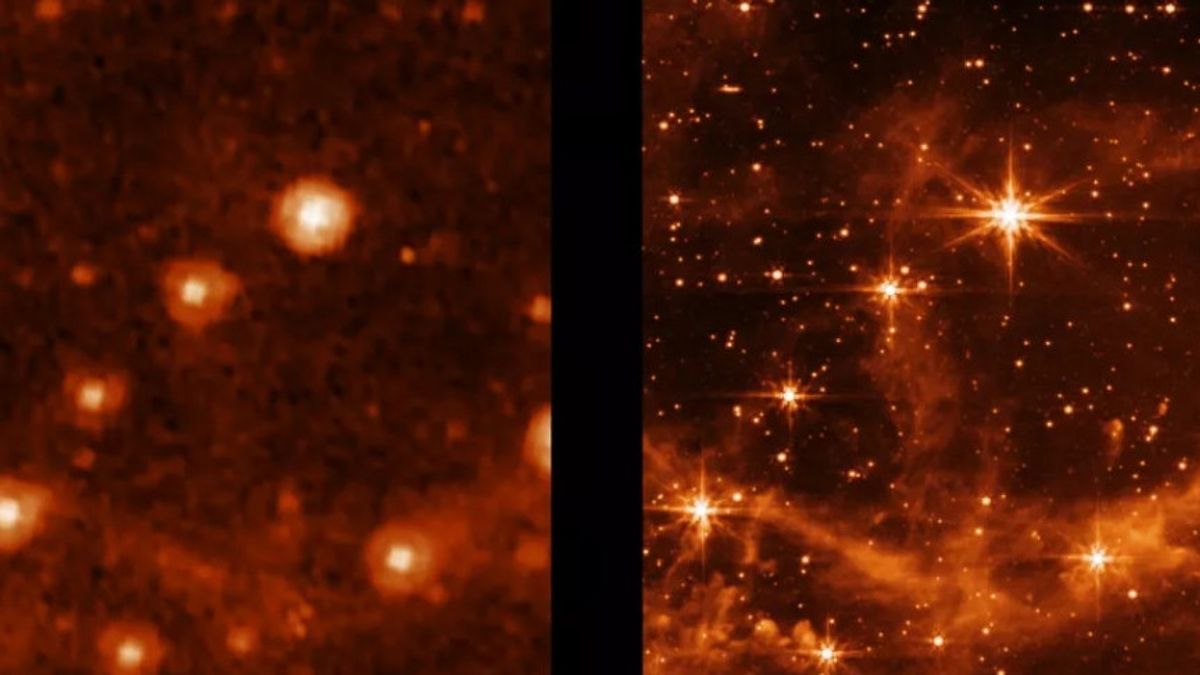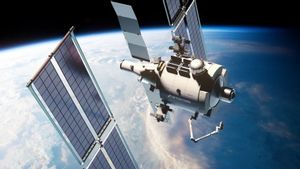JAKARTA - The four science instruments on NASA's James Webb Space Telescope have achieved perfect alignment, before starting a science project in July.
To prove the telescope's readiness, he retransmitted a new test image of a neighboring satellite galaxy taken using the telescope's Mid-Infrared Instrument, or MIRI.
The new image shows a side-by-side comparison of observations of nearby galaxies taken by the Webb Telescope, versus observations of the same galaxy previously taken by NASA's now retired Spitzer Space Telescope.
"I am pleased to report that the telescope alignment has been completed with an even better performance than we anticipated," said James Webb Space Telescope project scientist Michael McElwain.
"We basically achieved perfect telescope alignment. No adjustments to the telescope's optics would make any material improvement to our science performance."
Launching Live Science, Wednesday, May 11, from the image, Spitzer's results show seven or more nearby stars located in the Large Magellanic Cloud (a satellite galaxy orbiting the Milky Way) that is seen in a blur.
But the Webb Telescope image from the same region captures the foreground star in sharp detail, offset by thin clouds of interstellar gas and hundreds of background stars and galaxies, captured in what NASA calls unprecedented detail.
With the instruments aligned, the Webb Telescope awaits final instrument calibration before officially starting peering at alien planets in July.
Before embarking on a mission, the telescope will also share its first series of science images, targeting galaxies and objects that highlight all of Webb's science themes from the early universe, to galaxies over time, even the life cycles of stars, and to other worlds.
Scientists estimate that Webb will be able to describe distant objects up to 100 times, even if they are too dim for the Hubble Space Telescope to see.
The giant telescope was designed to observe the faint glow of the universe's earliest stars, dating from about 13.8 billion years ago, just millions of years after the Big Bang.
The English, Chinese, Japanese, Arabic, and French versions are automatically generated by the AI. So there may still be inaccuracies in translating, please always see Indonesian as our main language. (system supported by DigitalSiber.id)













